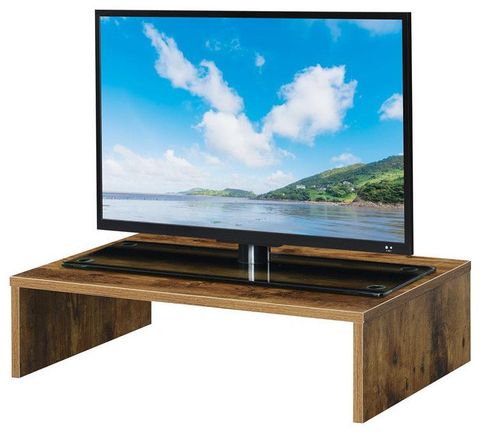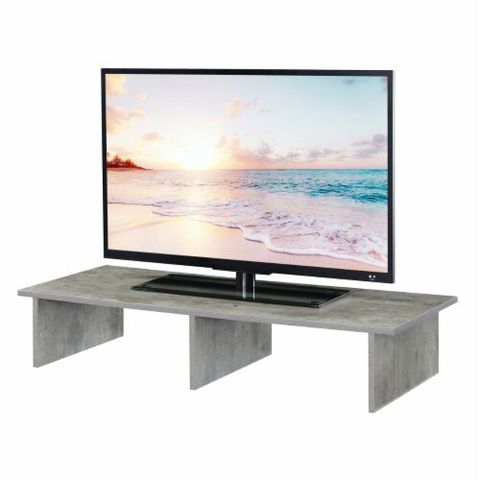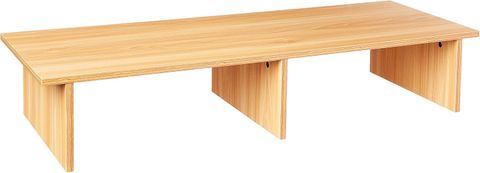Have you ever noticed how your neck starts to ache after just an hour of computer work? Or how your eyes feel tired and blurry by afternoon? It might not be just the hours you spend staring at screens. There’s something much more subtle at play – your screen’s height. We all know that sitting too close to a TV or hunching over our phones isn’t great for us, but what if I told you that how high or low your computer screen sits could be causing more problems than you realize?
In our digital age, we spend countless hours looking at screens. Whether it’s a computer monitor, tablet, phone, or television, we’re constantly engaged with visual media. But have you ever stopped to think about how your body responds to these devices? The simple act of positioning your screen correctly can make a world of difference in preventing common health issues like neck pain, eye strain, and even back discomfort. This isn’t just about comfort – it’s about protecting your long-term health. Every day, millions of people experience discomfort because their viewing height isn’t properly aligned with their body’s natural posture. What seems like a small detail can actually cause significant physical stress over time.
Understanding the Science Behind Screen Positioning
When you look at a screen, your eyes aren’t just focused on the pixels. They’re working in coordination with your entire body posture. Your neck and shoulders must support your head weight while maintaining proper alignment. When a screen is positioned incorrectly, your body has to compensate in ways that aren’t sustainable. Think about it – if you’re looking down at a screen that’s too low, your neck muscles have to work overtime to keep your head upright. Similarly, if the screen is too high, you’re constantly tilting your head back, which puts pressure on your cervical spine. This constant adjustment creates muscle tension and fatigue. Studies show that when screens are positioned at eye level or slightly below, people experience significantly less strain on their necks and eyes. Your body naturally wants to maintain good posture, and proper screen height helps make that easier. The key is finding that sweet spot where your gaze is naturally straight ahead, rather than having to crane or duck to see what’s on display.
The Connection Between Eye Strain and Screen Height
Eye strain happens more often than most people realize, and it’s not always about how long you’ve been looking at a screen. It’s also about how your eyes have to work to focus on different parts of the display. When a screen is positioned too high or too low, your eyes have to constantly adjust their focus. Imagine trying to read a book that’s either above or below your eye level – it would be uncomfortable and tiring, right? Your eyes have to work harder to maintain focus when they’re not looking at the screen at a comfortable angle. This extra effort leads to dry eyes, blurred vision, and headaches. Many people notice that their eyes feel better when they can look directly at the center of their screen. That’s because the optimal viewing position allows the eyes to focus naturally without having to compensate for awkward angles. The distance between your eyes and the screen also plays a role – but the height is equally important in determining how easily your eyes can process the visual information.
Neck Pain: The Silent Victim of Poor Screen Placement
Neck pain is one of the most common complaints associated with computer use, affecting nearly 70% of office workers according to recent surveys. But many people don’t connect it directly to their screen setup. When your monitor sits too low, you end up looking down at your screen, which forces your neck into a forward head posture. This position places tremendous pressure on the cervical vertebrae – think of it like holding a heavy book in front of your face for hours. Over time, this can lead to chronic neck pain, stiffness, and even headaches. Conversely, if your screen is too high, you’ll find yourself constantly looking up, which stretches the muscles in your neck and upper back. The solution isn’t just about adjusting your chair height – it’s about creating a workspace where your neck can stay neutral. Research has shown that people who maintain proper screen height report 40% fewer neck-related issues compared to those who don’t pay attention to their viewing position. Your neck has a natural range of motion, and forcing it into unnatural positions repeatedly is like asking your joints to do gymnastics every day.
Creating the Perfect Viewing Angle for Maximum Comfort
The ideal screen position varies depending on the device you’re using, but there are some universal principles. For desktop monitors, the top of the screen should be at or slightly below eye level. This means when you’re seated comfortably, your eyes should be looking slightly downward at the center of the screen. This position allows your neck to remain in a relaxed, neutral state. When you’re looking at a laptop screen, you might need to use an external monitor or a riser to achieve the proper height. Many people don’t realize that a laptop screen is often positioned too high, which causes them to tilt their head back to see the display. For tablets and smartphones, consider using a stand or adjustable holder to elevate them to eye level. The goal is to eliminate the need to crane your neck or bend your head forward. Some people find that using a document holder can help reduce the need to look away from their screen, especially when reading materials. The key is to minimize the number of times your neck has to move to accommodate your viewing position.
Practical Tips for Adjusting Your Workspace Setup
Making changes to your workspace doesn’t require expensive equipment or major renovations. Here are some simple steps that can make a big difference:
• Adjust your chair height so that your feet rest flat on the floor and your thighs are parallel to the ground
• Position your monitor so that the top edge is at or slightly below eye level
• Keep the screen about arm’s length away from your face
• Consider using a document holder for papers you need to reference frequently
• Take regular breaks every 20-30 minutes to stretch your neck and shoulders
• Ensure adequate lighting to reduce glare on your screen
• Use a keyboard tray to avoid reaching forward when typing
These adjustments may seem minor, but they can dramatically improve your daily comfort. Many people notice improvements within days of making these changes. Some find that they can work longer hours without experiencing the usual fatigue. Others discover that their headaches have diminished significantly. The beauty of proper screen positioning is that it’s a proactive approach to wellness rather than a reactive treatment for symptoms that already exist.
Long-Term Benefits of Correct Screen Height
The advantages of maintaining proper viewing height extend far beyond immediate comfort. When your neck and eyes are properly aligned, you’re reducing the risk of developing chronic musculoskeletal issues. This is particularly important for people who spend many hours each day in front of screens. Over time, poor posture from incorrect screen height can lead to permanent changes in spinal alignment, which affects everything from your breathing to your overall energy levels. Better eye positioning also reduces the likelihood of developing vision problems associated with prolonged screen use. Your eyes adapt to the way they’re being used, so maintaining good habits early can prevent future complications. Many professionals report feeling more alert and productive when their workspace is properly set up. The mental benefits are just as important as the physical ones – when you’re comfortable, you’re more likely to stay focused and engaged in your work. Plus, you’re setting yourself up for better sleep quality since you’re not carrying tension from poor posture into your evening hours.
Proper viewing height isn’t just about convenience – it’s about taking care of your body in a digital world. The simple act of positioning your screen correctly can prevent years of neck pain, eye strain, and posture problems. It’s easy to get caught up in the latest technology trends or ignore the small details that affect your daily life. But investing a few minutes to set up your workspace properly can save you from discomfort later on. Whether you’re working at a desk, watching TV, or scrolling through your phone, remember that your body is telling you something when it feels strained. Listen to those signals and make adjustments accordingly. The best part? These changes benefit you immediately and continue to pay dividends for years to come. Your future self will thank you for taking this simple step toward better health today.














